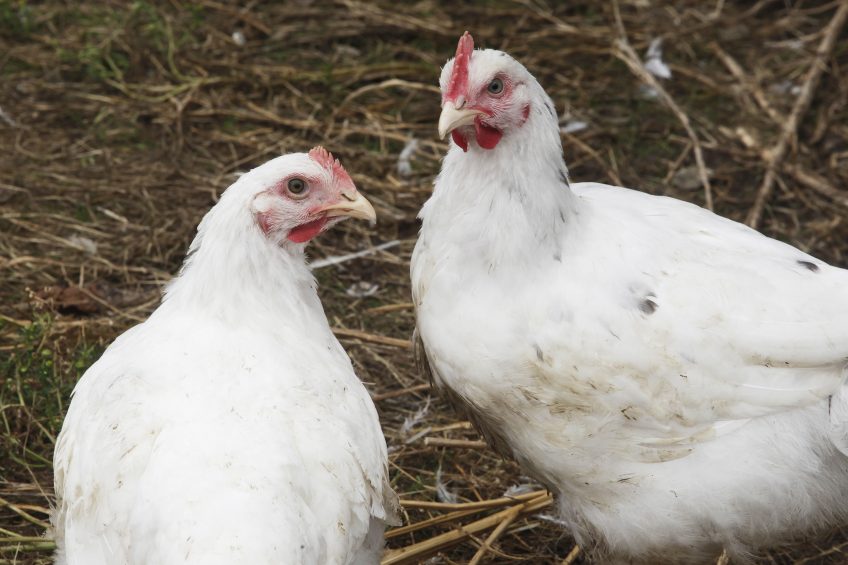The limits of genetic potential

Laying hens and broilers have enjoyed great leaps in performance over the decades in which large-scale genetic selection has taken place – but where are the limits? It may not be biological, as Poultry World discovers
Future breeding programmes for poultry may have to take a more holistic approach that considers bird welfare and environmental concerns, in addition to improved performance, a leading geneticist has warned.
While limits to physiological selection do not appear to be close, the need to balance overall bird health and robust development may become more important, according to Michèle Tixier-Boichard, of the University of Paris Saclay’s GABI: Animal Genetics and Integrative Biology unit.
Work to determine the limit of poultry selection, where either traits plateau or the “fitness” of a bird deteriorates beyond an acceptable level have not yet yielded a definitive answer, said Dr Tixier-Boichard. The longest selection experiment for a domestic bird was quail, based on four-week bodyweight, which concluded after 97 generations. Even after 90 weeks some response was observed by researchers. For chicken, an experiment selecting eight-week bodyweight ran for 54 generations with no limit observed on the high body weight line after that time – birds selected for low body weight by contrast began to show no response to selection after 50 weeks.
Biology
For broilers, some low-fitness traits have emerged over the generations of breeding programmes where early growth is considered a priority, said Dr Tixier-Boichard. Slower skeletal development, when compared with the rapid growth of breast muscle, has put pressure on birds’ gait quality and leg integrity. This in turn has led to well-documented disorders such as tibial dyschondroplasia, bone deformities and valgus-varus deformities. Cardiovascular efficiency has also been compromised, suggested Dr Tixier-Boichard, leading to the rise in myopathies causing meat-quality defects. The “antagonism” between early growth and reproduction may also need to be addressed, she said, explaining there is a limit to the extent to which broiler breeder diets could be restricted.
Laying hens
Dr Tixier-Boichard said a number of “unfavourable trends” had also emerged in commercial layers, with osteoporosis, as a consequence of “major pressure put on calcium metabolism and bone remodelling by egg shell synthesis”.
Injurious feather pecking has also been linked with bird selection, with one hypothesis being that the trait for total bird egg numbers is linked to social dominance – historically hens have been bred in single cages in breeding programmes so positive sociability with other birds was not selected for.
One “biologically limited trait” is the cycle of egg production, which is broadly speaking limited to a single egg roughly every 24 hours, linked to birds’ cycadean rhythms. Experimental breeding programmes have squeezed this to a 22 or even 20-hour cycle, but the management of such a system would likely be too complex. Instead, the extension of the production period of hens is considered the way to chase higher bird performance.
Ethics
Balancing production and welfare therefore has its place, but where does the responsibility lie? Dr Tixier-Boichard argued that the breeding companies were simply managing demand from their consumers, poultry producers. They in turn do not have awareness of the issues, she suggested, and it was NGOs improving consumer awareness that was driving change. She cited the Wakker Dier ‘Chicken of Tomorrow’ movement in the Netherlands as a successful example. The pressure from that charity has resulted in more than 50% market share for broilers growing at less than 50g/day in the country.
Testing the limit
Dr Tixier-Boichard concluded a plateau for poultry performance in selection had yet to be found – possibly because of the relatively short time commercial breeding programmes had been in place. “Whereas management or technological changes provide short-term solutions to compensate for a biological limit to selection, changes in breeding programmes have the advantage of being cumulative.”
She added that genomics, where the whole genome can be observed, could offer opportunities to understand selection pathways better in the future.
Defining selection objectives must take into account the contribution of poultry to the whole agricultural and food system. The challenge is combine production, with welfare and low environmental footprint.”
Wooden breast syndrome: The latest science Fibrous |
This report is based on a plenary lecture delivered at the 2018 European Poultry Conference held in September.













